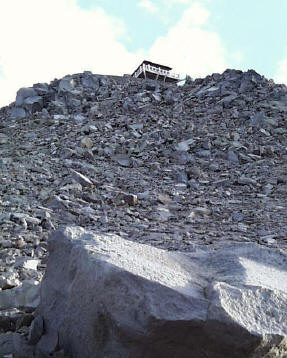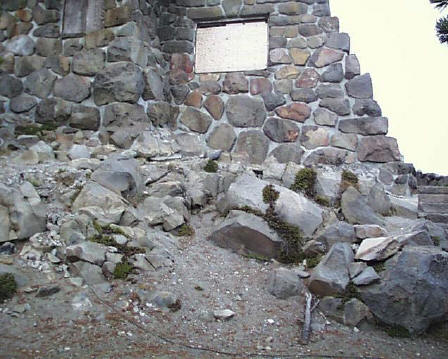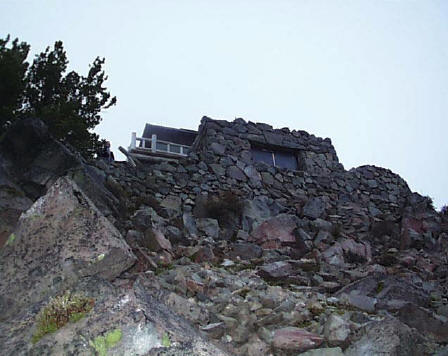National Park Service Cultural Landscapes Inventory: The Watchman, Crater Lake National Park, 2001
Analysis And Evaluation
Buildings And Structures
Watchman Observation Station retains integrity of buildings and structures and contributes to the significance of the Watchman cultural landscape. Watchman Observation Station, also referred to as Watchman Fire Lookout in the NPS List of Classified Structures (LCS), was designed by Francis Lange and constructed between 1931-1933. Watchman Observation Station was conceived, designed, and developed in General Development Plans and Crater Lake Master Plans beginning in the early 1930s, as a NPS Rustic-styled fire lookout and museum.
The Rustic-styled observation station incorporated Crater Lake’s available indigenous materials including rock and wood to harmoniously blend in with the building’s context. Specific aspects of the style included use of native materials, simplicity in design, avoidance of overly perfect construction lines, use of exterior colors such as brown and gray to blend with the setting, and a general look as if the structure was built by pioneer craftsmen. Watchman Observation Station was subordinate to its surrounding environment, creating the overall feeling that it was less important than the setting (Greene 1984, 185-6). Thomas C. Vint, Chief NPS Landscape Architect, espoused this design philosophy during the period of significance saying: “all buildings on the Rim of Crater Lake (should be) very inconspicuous, in order that one viewing the crater from any point would not feel the presence of buildings” (Vint, 1930, n.p.).
The LCS describes the Watchman Observation Station as a two-story tower. A cut-stone floor, foundation, and walls enclose the first floor, housing a museum, comfort station, and water supply. The second floor, housing the fire lookout, is enclosed with plate glass. A catwalk (Watchman Overlook) and associated stairs leading from the stone parapet are comprised of milled lumber.
The observation station, as envisioned by Crater Lake planners in the 1920s, was to serve as a fire lookout and interpretive site. As a fire lookout, Watchman Observation Station was part of a network of fire lookouts located inside Crater Lake’s boundaries and outside—on U.S. Forest Service lands and elsewhere. The network “provided almost one hundred percent visibility of the forests in the Crater Lake region” (Greene 1984). During the period of significance, the prompt detection of forest fires was essential to the protection of Crater Lake. As a result, rangers stationed at the fire lookouts kept in close contact by telephone during the period of significance and by short wave radio beginning in 1954.
As an interpretive site for park visitors, the building housed a museum on the first story and a viewing platform on the second. The museum’s focus was on forestry education while the platform served as a wayside for visitors to come into contact with an assigned Ranger-Naturalist who would educate park visitors about Crater Lake.
In summary, buildings and structures is a landscape characteristic of Watchman Observation Station and remains an excellent example of NPS Rustic architecture.
 |
| Contemporary photograph showing Watchman Observation Station at the top of the peak (CCSO 2001). |
 |
| Contemporary photograph showing detail of Watchman Observation Station’s foundation (CCSO 2001). |
 |
| Contemporary photograph showing how Watchman Observation Station seems to rise from the peak, fully integrated within its context (CCSO 2001). |
***previous*** — ***next***


